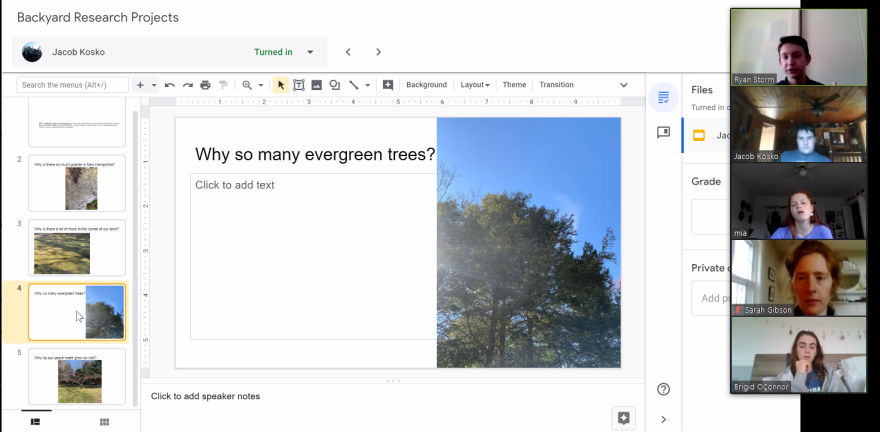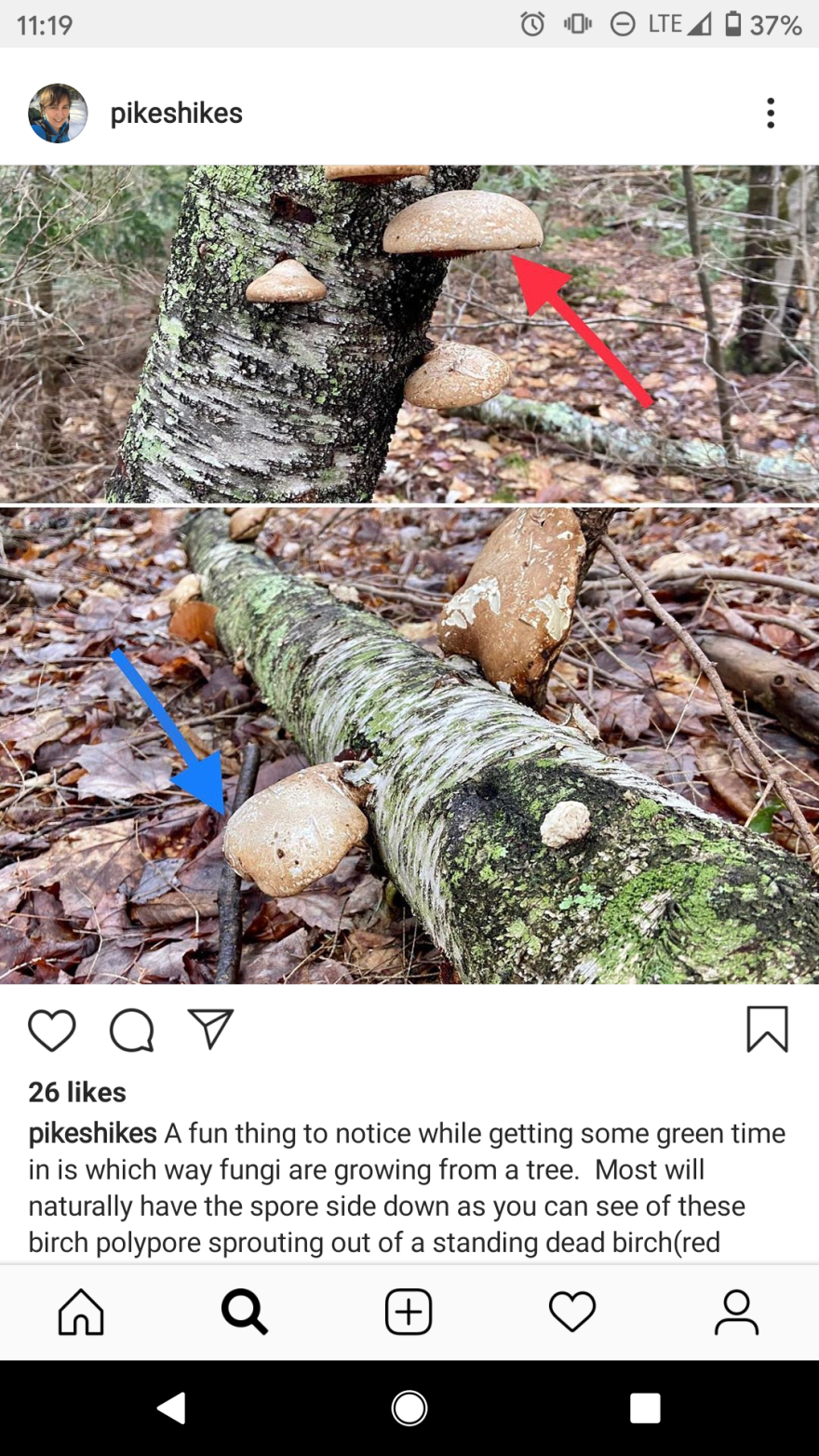Before school closure, Dr. Susan Pike’s classrooms were loud, and she prided herself on it.
Students in her high school science classes at the private school St. Thomas Aquinas High School, in Dover, would do calculations together on the white board, bounce between group experiments, and crowd over microscopes to inspect pond scum.
“One of the favorites is the pond water [lessons], where we're looking at different species and then doing things with food webs, and they're all looking at microscopes and finding these disgusting worms,” she says. “And people are talking to each other and sharing their ideas.”
Sharing ideas in a lab is central to science education. So is hands-on learning. But with school closures from the coronavirus pandemic, science teachers are now trying to figure out what of this can be translated during remote learning. Pike says some of the magic in her classroom is impossible to recreate online.
“We're all getting tired of looking at a screen of faces, oftentimes with just the name, and it's just like talking into the void,” she says.
Fill out our coronavirus survey to let us know how you're being affected.

Most of Pike’s students don’t have microscopes at home, but they can still go outside. And that’s where some of the most engaging work in remote science classes can happen.
Recently, she asked her freshmen to come up with a question about something happening in their backyard.
On a classroom Zoom call, freshman Ruari Hatch asks if there’s a certain part of his magnolia tree that blooms first, depending on the amount of sun it gets. They talk it through on the screen, and Ruari makes a plan to observe the independent varaible - sun exposure - over the weekend.
Most of these students say there’s a perk to remote learning: more time outside. But advanced concepts in science and math classes are harder to grasp. On another Zoom call, student Ryan Storm says he misses having a teacher look over his shoulder as he’s doing calculations.
“It’s really hard to ask a teacher through like an email or video chat because you can’t do it with them," he says.
Through a screen, teachers can’t see in real-time where students are getting confused. And that makes it hard to track progress.

The possibilities for remote learning are different for elementary school science classes. These lessons rely less on high-tech labs and more on simple materials that often can be found at home.
April Marsh teaches math and science at Edward Fenn Elementary School in Gorham. After watching her kids grow frustrated with video math lessons, she assigned the egg drop challenge.
This might be familiar to anyone who's taken a science class. Students had to create a device to protect a raw egg, drop it from different heights, and see if it stayed intact. They recorded their steps on smart phones, emailed the videos to Marsh, and explained the physics of it - how energy got transferred, and why the egg cracked or survived.
“To give them something that they can do hands on and that they were excited about, it was great,” Marsh says. “Every video I watched brought such a smile to my face, to see them be so creative and just there's so many things that I didn't think of that they thought of.”
Fourth grader Andrew Albert cut open a rubber ball, stuffed it with popcorn and inserted his egg, wrapped in a sock, before taping the ball back up. His sister recorded the whole experiment.
“This was way funner,” he said. “It’s actually something fun you could do with a family.”
Albert likes math and science, but he says learning it online is exhausting.
“It messes up my brain," he says. "It gets me tired because I’m focusing so much on a screen.”

In a push to limit screen time and adjust expectations in the pandemic, most schools have limited the hours they expect students to do classwork online. This means science teachers have fewer hours with their students.
Marsh says it’s a constant balance.
“You give the material the best way you can and you hope that they retain the information,” she says. “But with also the understanding that all of them are in very different environments in their house and have very different levels of support at home.”
Take the mold terrarium.
Recently, Marsh asked her class to leave a slice of bread in a plastic bag, and watch it grow mold over time. Some told her they didn’t have enough food at home and couldn’t let a slice of bread go to waste.
For those students, Marsh is growing mold on bread at her house and sending pictures.
Some families have found remote learning discouraging - but science educators say there are ways to make science fun even if school at home feels like a drag.
Gabby Bradt is a coastal science educator with UNH Extension. She has three kids - ages 10, 8, and 4. And they’ve been spending a lot of time in the woods near their Stratham home.
“My kids - as much as I adore them - are really wired and they have a lot of energy. So the only way that I could have dealt with the extended homeschooling stuff was to play up my strengths... nature, science and the outdoors,” she says.

Their time outside serves two purposes: it helps Bradt and her kids get out their pent-up energy, and it gives them a natural lab. They’ve built a bridge over their creek - physics - and looked for salamanders - biology.
And all of this has reinforced a basic principle of science.
“You ask a question and you try to find the answer,” explains Bradt. “And it can be very simple. It’s like - ‘Do you hear the birds? Do you hear those songs? I wish I knew more about those songs!’”
Bradt’s kids spend a lot of time observing the bird feeder, and they’ve recently started using apps like iNaturalist to identify newly sprouted spring plants.
The other day in the woods, Bradt stopped them to take a picture of a low-lying plant emerging from fallen leaves.
“Let’s see if it tells you what it is,” she said, waiting for the photo to upload.
“Dwarf cinquefoil!” she announced.
“Dwarf cinquefoil?” her young daughter pronounced it slowly.
“Yes, I think it kind of looks like strawberry,” she says. “It tells you all that it belongs to. This is called taxonomy. So, it tells you it’s from the kingdom Plantae.”
Bradt’s kids decide it’s “cool,” then move on to something else. And Bradt says this is okay -- home science should be short, hands-on, and build off a kids’ natural curiosity in the moment.
Bradt has some advice for parents who want to encourage science at home, but aren’t experts: Don’t sweat it. Just go outside, she says, and start asking questions.
If you want some ideas for doing science at home, check out these resources:
- Squam Science Center, Seacoast Science Center, andUNH Sea Grant (where Gabby Bradt works) all have virtual ecology and biology lessons
- Motivis has free resources for K-12 science education
- Mystery Science offers free K-5 science curriculum
- Mount Washington Observatory has an online classroom.
- The New Hampshire Department of Education has resources for remote learning
Dr. Sue Pike and her colleagues at St. Thomas Aquinas offered these options:
- Maine Science Teachers Association's list of resources
- Jon Darkow has a collection of simulations that allow you to manipulate multiple variables and to see how data is impacted by these variables
- Biology Simulations and SERC have graphics for students to play around with simulations, virtual labs, and data sets
- Gizmos-ExploreLearning offers interactive math and science simulations for grades 3-12, free for educators during the coronavirus outbreak
- National Geographic Educator and Instructables have online lessons and projects at home
- ChemCollective, Royal Society of Chemistry, and ACS (American Chemical Society) have chemistry resources and virtual labs










